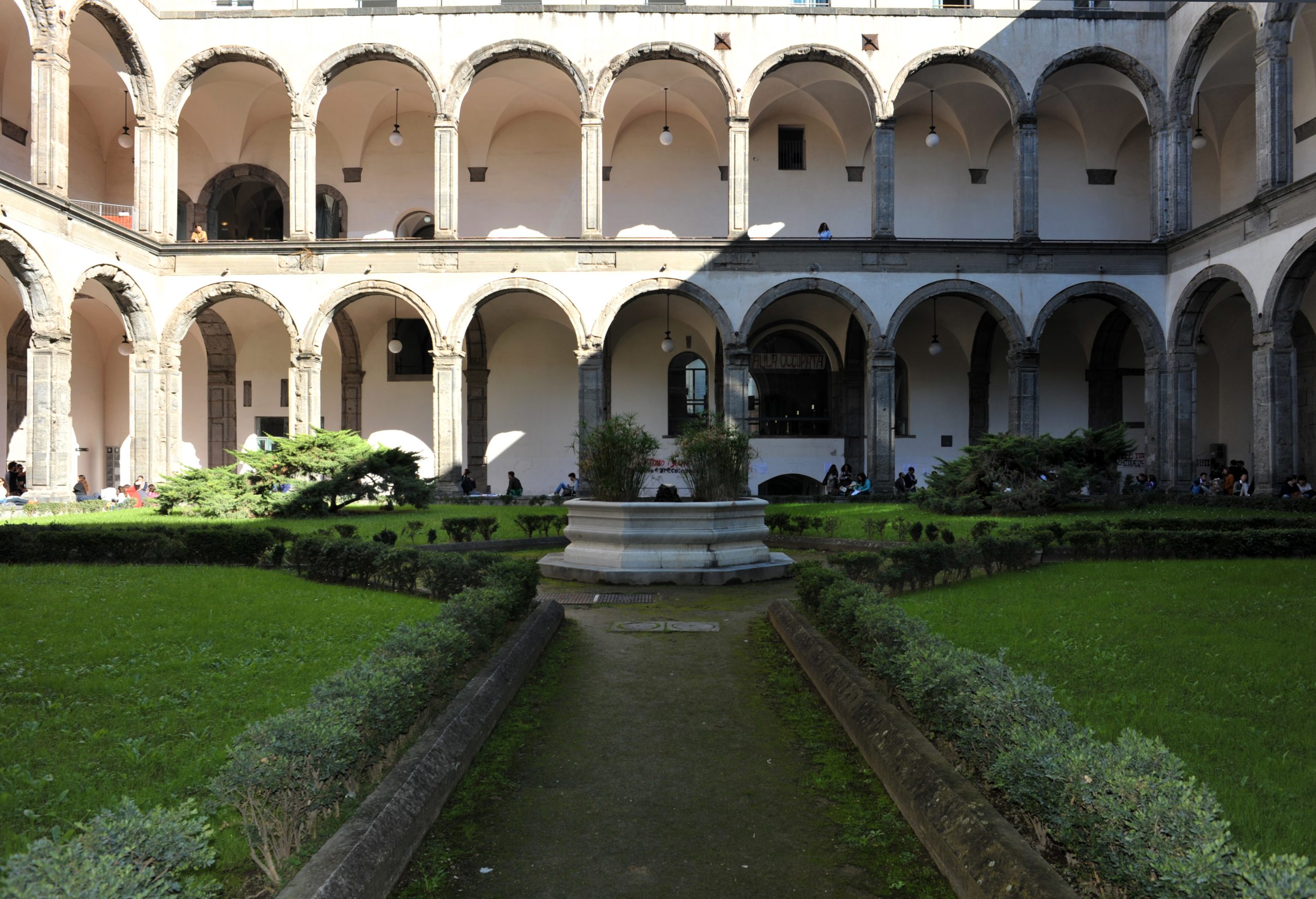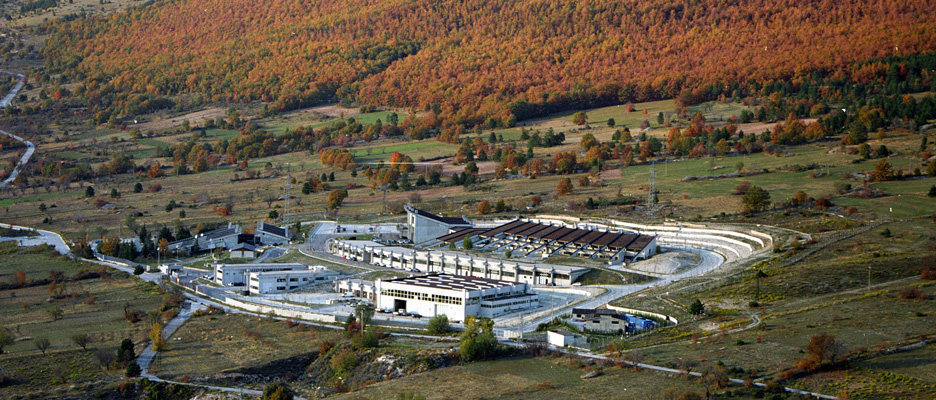%20foto%20sito%20DSU.jpg) |
Cloister of the Convent of San Pietro Martire, home of Department of Humanistic Studies of University of Naples Federico II - via Porta di Massa 1, Napoli - https://www.new.studiumanistici.unina.it/ |
Conference day one (September 13 - from 9 am to 4:30 pm) will take place in Naples, at the Department of Humanistic Studies of University of Naples Federico II, located in the monumental building of San Pietro Martire (room: aula Pietro Piovani - street address: via Porta di Massa, 1 - Google Maps link).
The Department of Humanistic Studies represents a coming together of homogeneous knowledge within the area of humanistic and social disciplines. Such a coming together is based not on a sectorial vision but a critical and integrated one of these disciplines, which is suitable to guarantee the scientific and didactic efficiency in the field of literary subjects, of philosophy, of history, of foreign languages and literatures, of sciences dealing with cultural property, of psychological and pedagogical sciences and, at the same time, being able to ensure the quality of research for each of the sectors in question, and so favouring an inter-disciplinary approach.
The six Sections in which the Department is articulated co-ordinate the activity: i.e. Modern Philology, Philosophy, Psychology and Educational Sciences, Antiquity Sciences, Historical Sciences, the History of the Cultural Patrimony. The sections promote common scientific and cultural interests, bringing together professional, instrumental and technological resources and ensure the organization of the research activities. The Sections monitor the development of the activities undertaken within each section and so contribute to carrying out the objectives of the departmental research.
The research activities of the DHS include doctoral training, articulated in directions which have to do with the various thematic areas.
The doctoral research projects active in the Department are as follows: Philology; Mind, Gender and Language; Philosophical sciences; Historical, Archaeological and Historical-artistic Sciences.
Information on how to reach the Department can be found here.
 |
| Outside area of INFN Gran Sasso National Laboratory - via G. Acitelli 22, Assergi, L'Aquila - https://www.lngs.infn.it/ |
Conference day two (September 14 - from 9 am to 5 pm) will take place in Assergi (L’Aquila) at the Gran Sasso National Laboratory of the National Institute for Nuclear Physics (room: E. Majorana - street address: via Giovanni Acitelli, 22 - Google Maps link).
The INFN Gran Sasso National Laboratory (LNGS) is one of the largest underground laboratories in the world devoted to neutrino and astroparticle physics, a worldwide research facility for scientists working in this field of research, where particle physics, cosmology and astrophysics meet. It is unequaled anywhere else, as it offers the most advanced underground infrastructures in terms of dimensions, complexity and completeness. LNGS is funded by the National Institute for Nuclear Physics (INFN), the Italian Institution in charge to coordinate and support research in elementary particles physics, nuclear and sub nuclear physics.
Located between L’Aquila and Teramo, at about 120 kilometres from Rome, the underground structures are on one side of the 10-kilometre long highway tunnel which crosses the Gran Sasso massif (towards Rome). The underground complex consists of three huge experimental halls (each 100-metre long, 20-metre large and 18-metre high) and bypass tunnels, for a total volume of about 180.000 m3. The 1400 metre-rock thickness above the Laboratory represents a natural coverage that provides a cosmic ray flux reduction by one million times; moreover, the flux of neutrons in the underground halls is about thousand times less than on the surface due to the very small amount of uranium and thorium of the Dolomite calcareous rock of the mountain. The permeability of cosmic radiation provided by the rock coverage together with the huge dimensions and the impressive basic infrastructure, make the Laboratory unmatched in the detection of weak or rare signals, which are relevant for astroparticle, sub nuclear and nuclear physics. The outside area hosts other laboratories and infrastructures as well as the Directorate, the Divisions and the Departments.
Currently 1100 scientists from 29 different Countries are taking part in the experimental activities of LNGS. The LNGS research activities range from neutrino physics to dark matter search, to nuclear astrophysics, and also to earth physics, biology and fundamental physics.
Here you can find some information on how to reach LNGS.
LNGS is located about 120 kilometers north-east from Rome. Drivers can take highway A24 from Rome or Teramo. Take the exit "L'Aquila East" or "L'Aquila West" in order to to get to L'Aquila or take the exit "Assergi" to reach the lab: at the toll gate turn right, then turn right again and take via Giovanni Acitelli: after approximately 400 meters you will find the laboratory entrance on your left.
All people landing in Fiumicino or Ciampino can take a Gaspari or Flixbus direct bus from airports to L’Aquila (final bus stop Amiternum bus station). Taxi cabs are normally available at Amiternum bus station and can be reserved by calling local Radio Taxi company (+39 0862 25165).
Participants may also take TUA-Abruzzo buses from Rome (Tiburtina train station) to L’Aquila (timetable available here). First bus stop in L’Aquila is Amiternum bus station (same as Gaspari and Flixbus buses) and final stop is Collemaggio Bus Terminal (located in the city center). An option to reach LNGS from the Collemaggio Bus Terminal lab is taking local bus line M6 of AMA company (timetable available here).
Further information on how to reach LNGS can be found here.
